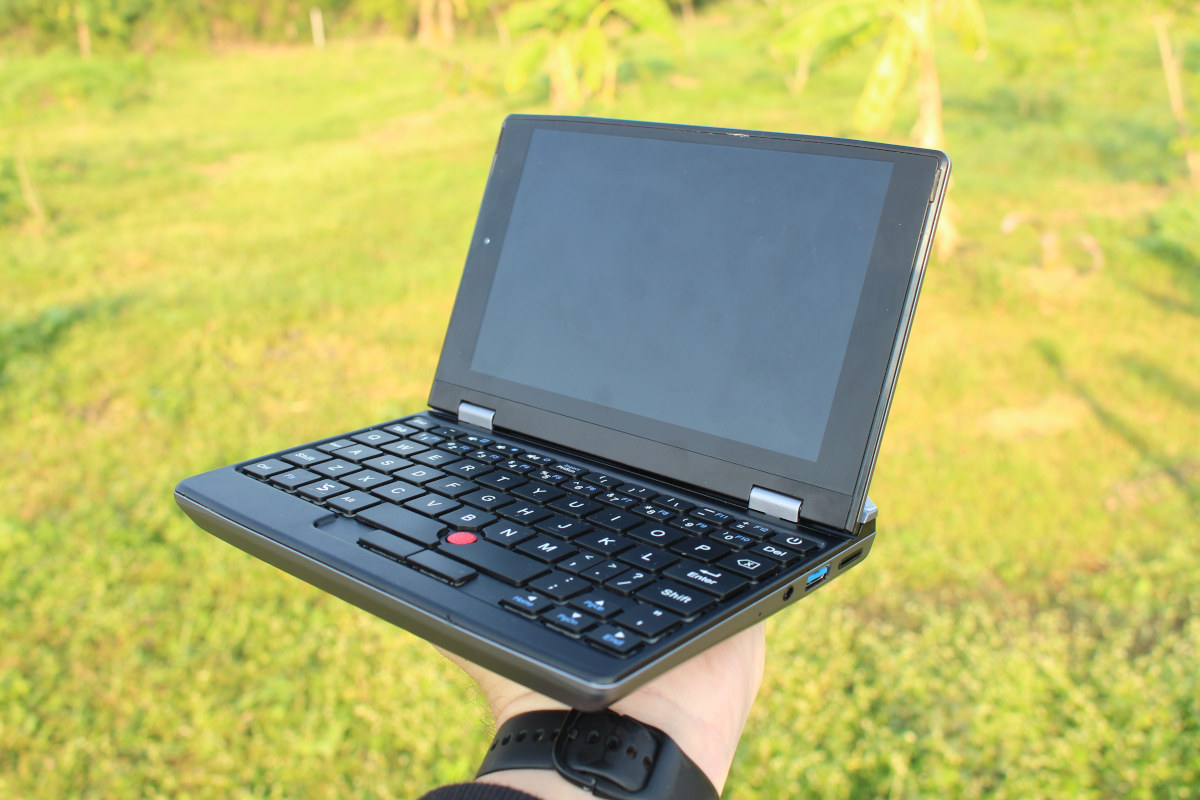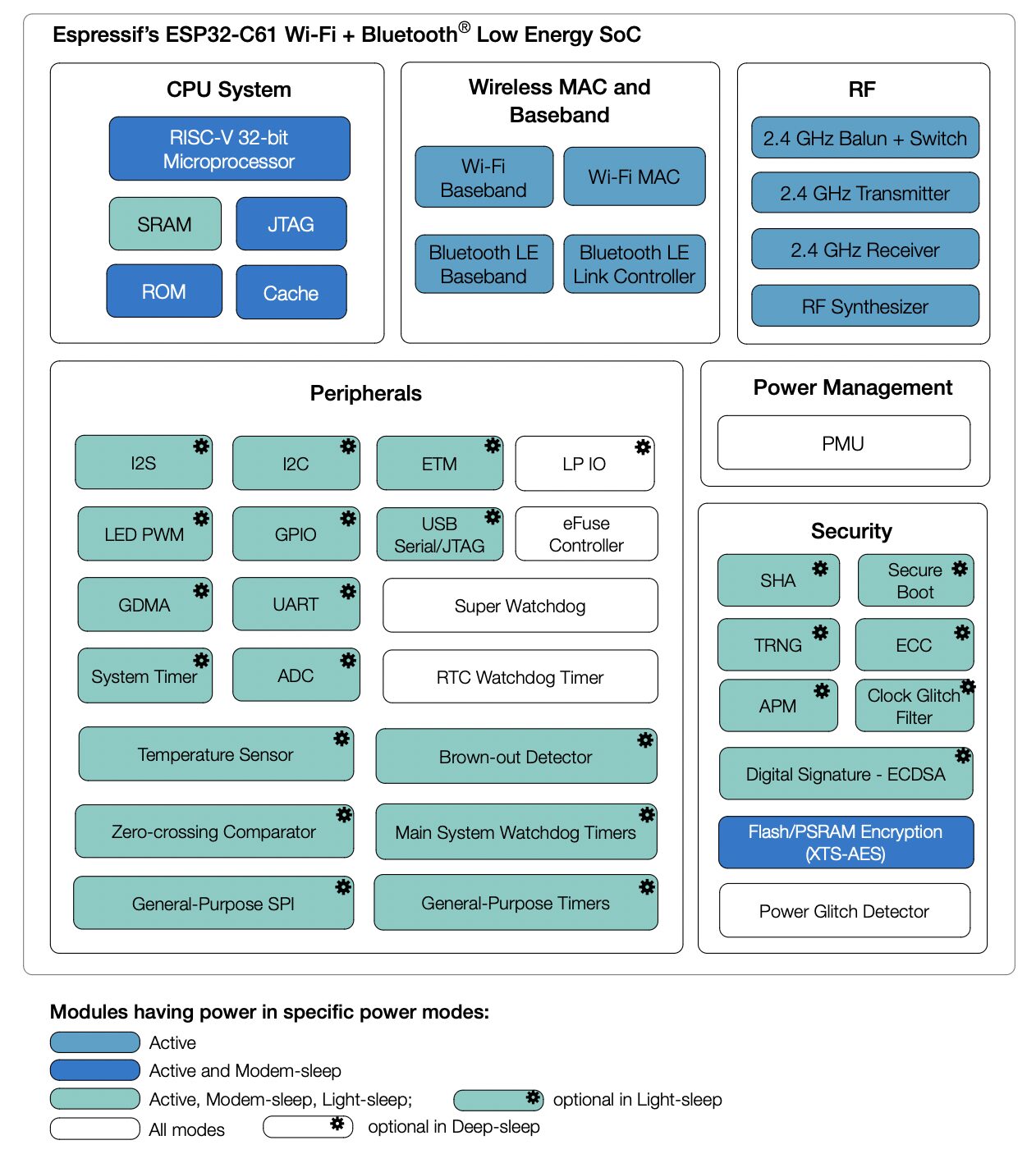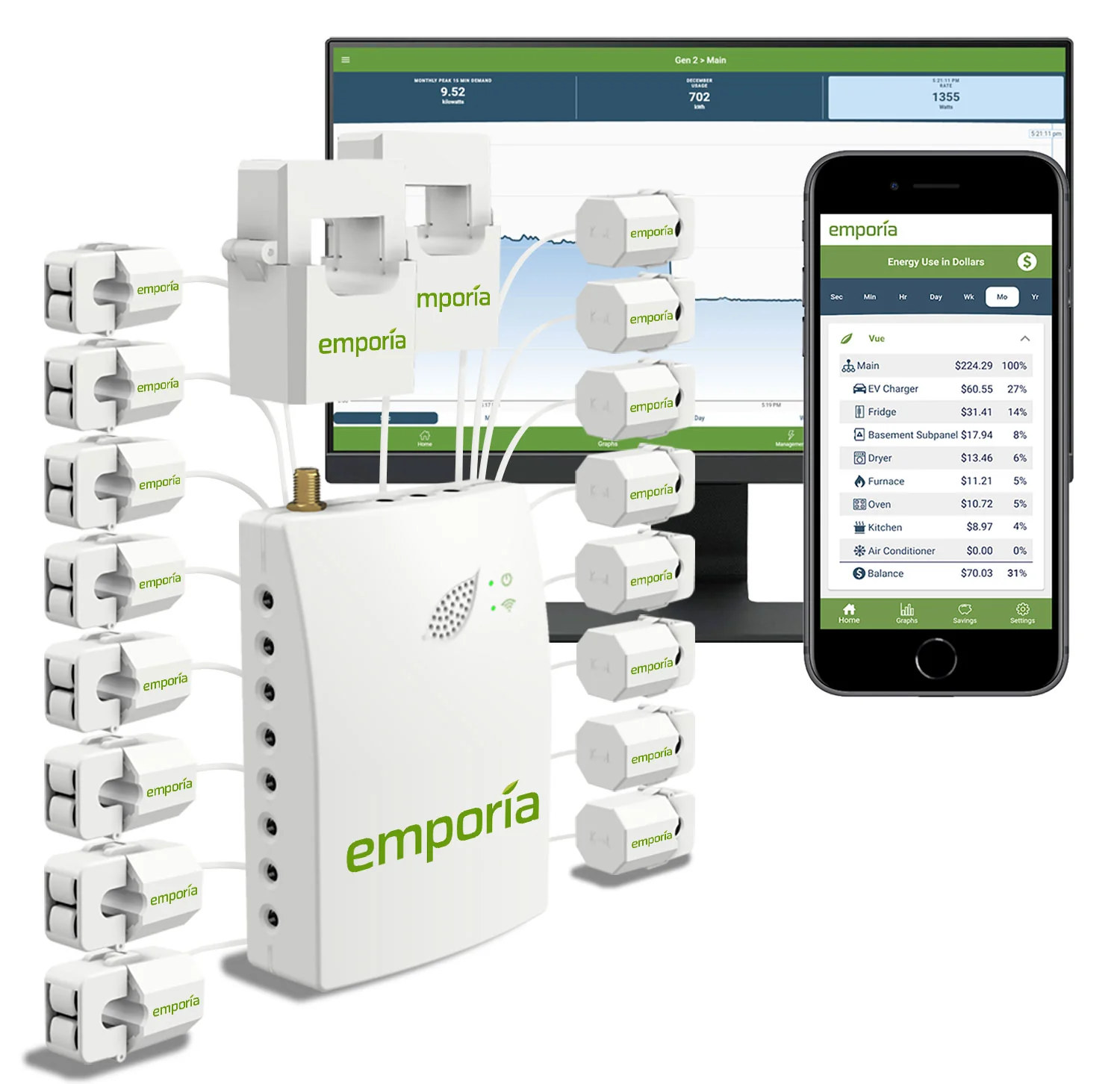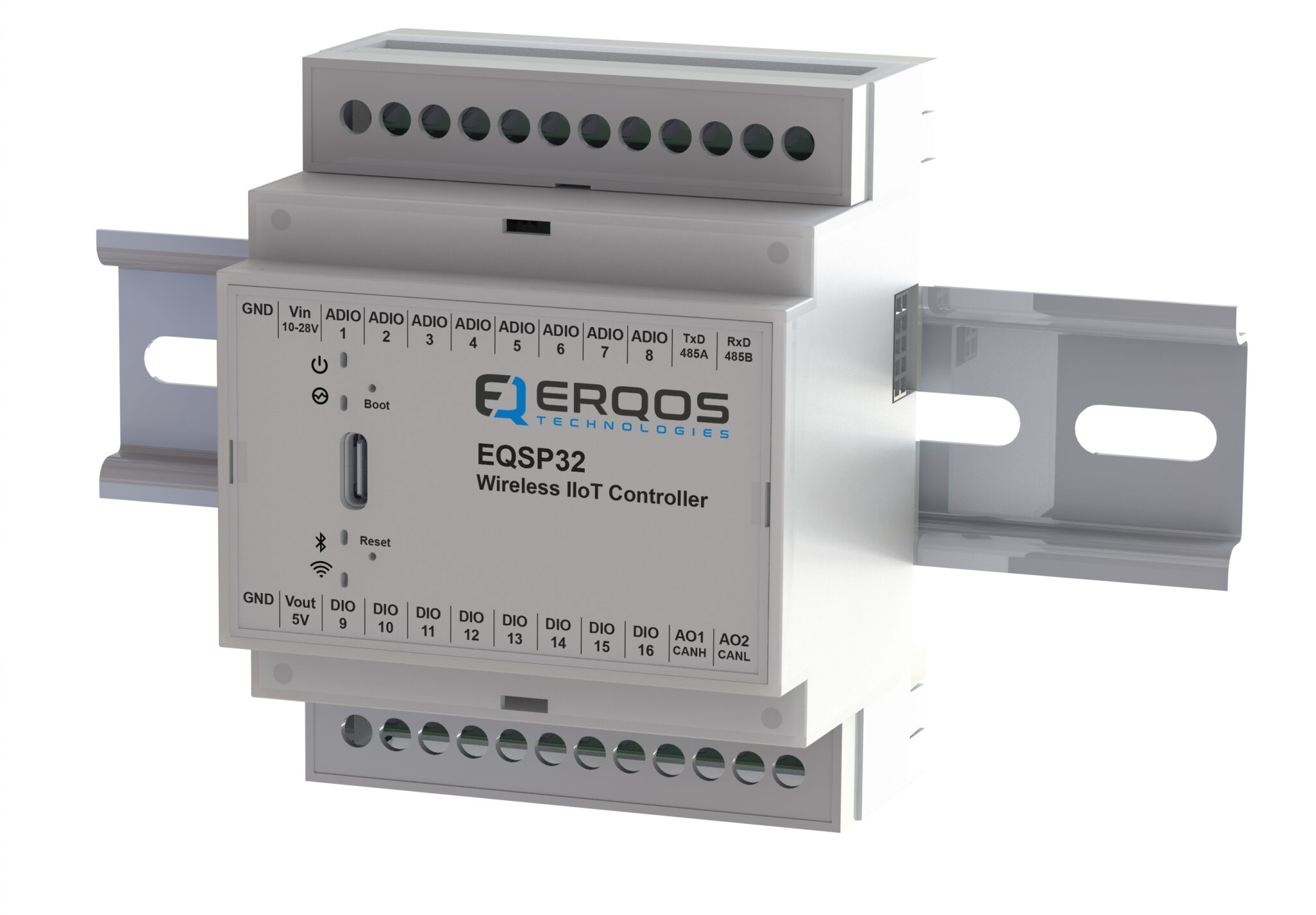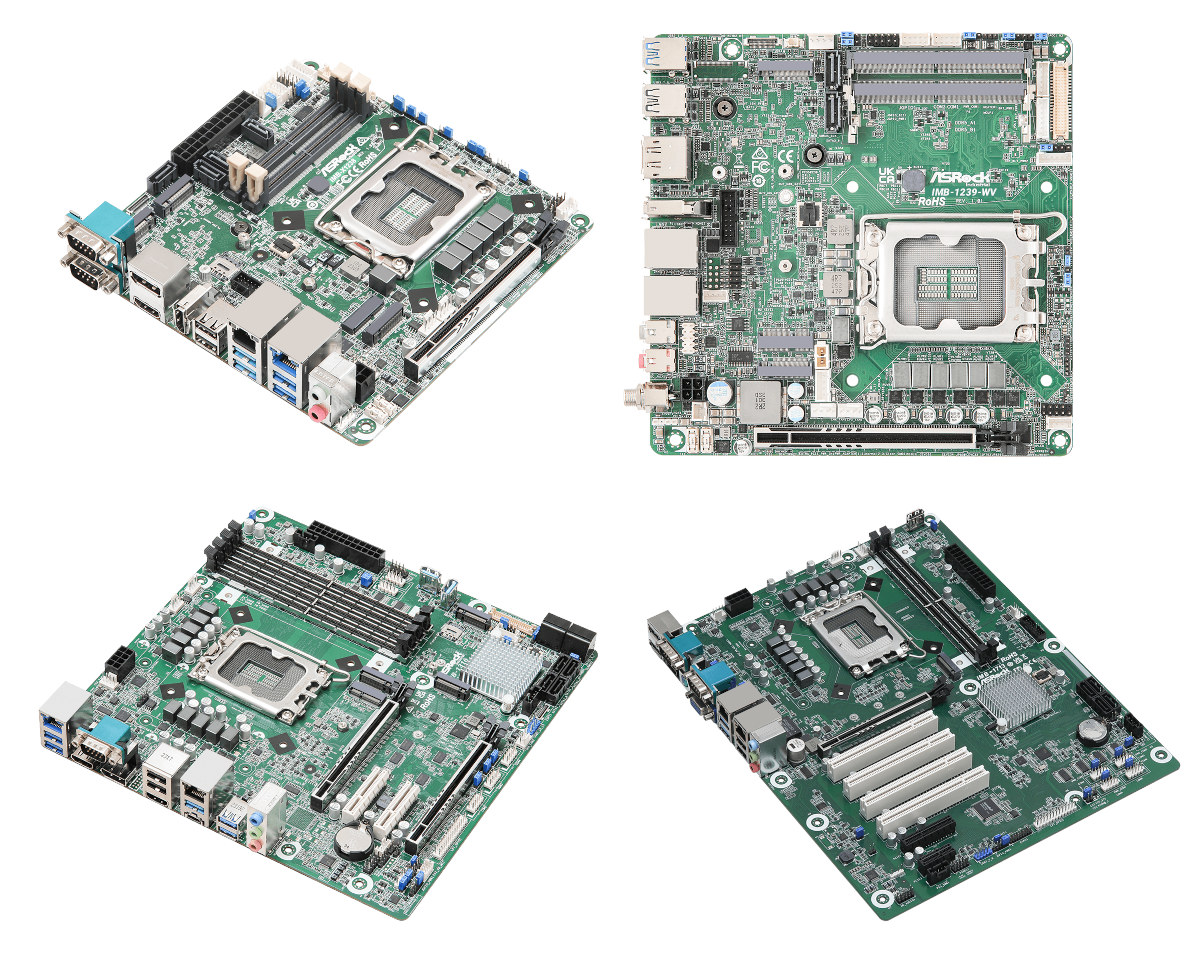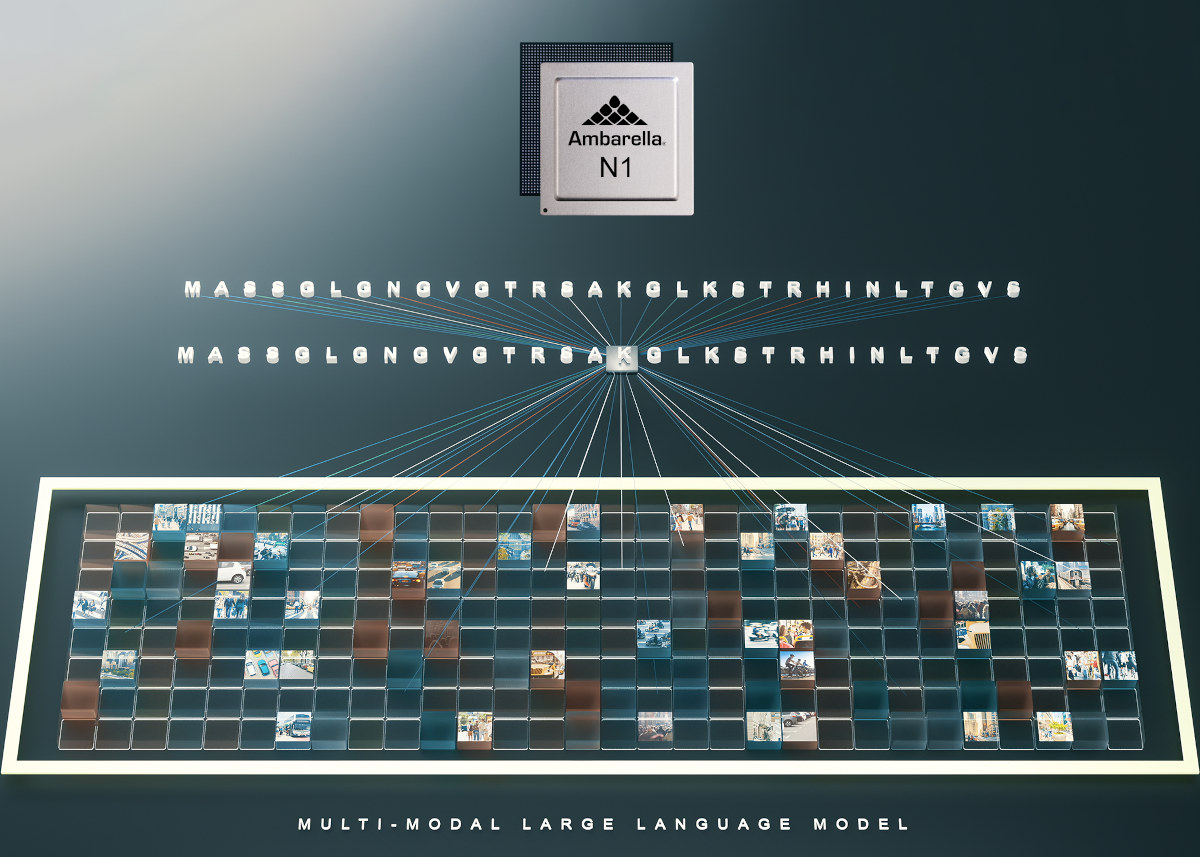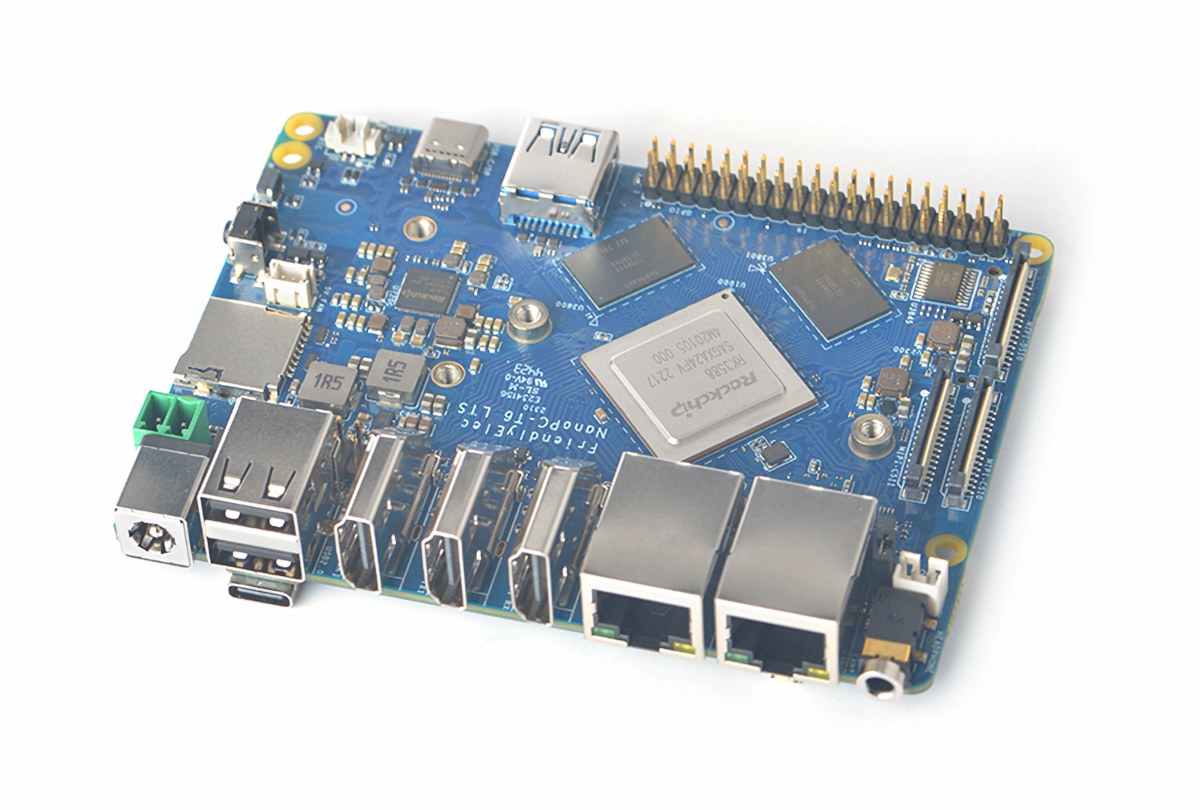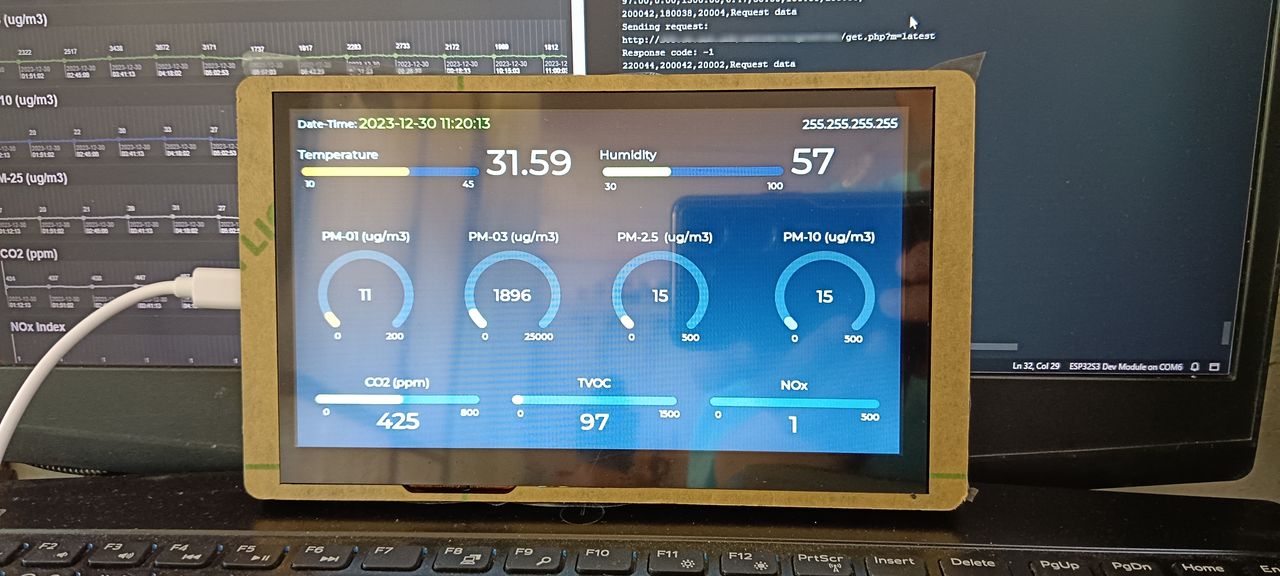Sipeed has just sent me a “Lichee Console 4A portable RISC-V development terminal” for review. It’s a quad-core RISC-V mini laptop based on the Alibaba T-Head TH1520 processor with a 7-inch touchscreen display, and my model is equipped with a Lichee LM4A module fitted with 16GB RAM and 128GB eMMC flash. I’ll start the review of the RISC-V developer kit with an unboxing, a teardown, and a quick try with the preinstalled Debian 12 “Bookworm” image, before testing the latter in the second part of the review. The second part will take some time as we have about twenty reviews planned for now, four of which I’ll be taking care of myself… Lichee Console 4A unboxing I received the device in a package indicating I had been sent the 16GB+128GB model and reading “Lichee Console 4A portable RISC-V developer terminal” which makes it clear it’s based on RISC-V, is portable […]
Espressif announces the ESP32-C61 WiFi 6 SoC with improved affordability and wireless connectivity
Espressif has announced the ESP32-C61 SoC, a new ESP32-Cx chip with improved wireless connectivity, and expanded memory options. The ESP32-C61 builds upon the foundation laid by previous ESP32-Cx chips, such as the ESP32-C2 and ESP-C3, and its specifications appear to be quite similar to the ESP32-C6 launched in early 2023, but this SoC also adds support for the BLE Mesh 1.1 protocol and Quad SPI PSRAM at a frequency of up to 120MHz. It supports WiFi 6 on two modes (802.11ax and 802.11b/g/n) and includes a Bluetooth 5 (LE) radio with support for long-range operation through advertisement extension and coded PHY. The TWT (Target Wake Time) feature is supported in 802.11ax mode to save power, as well as OFDMA (Uplink/Downlink) and MU-MIMO (Downlink) for a high-quality, low-latency connection between devices. ESP32-C61 specifications: CPU – Single-core, 32-bit RISC-V microcontroller that can be clocked up to 160MHz Memory: 320KB on-chip SRAM 256KB […]
Emporia Vue Gen 2 energy monitor ships with 16 CT clamps, supports single and three-phase power
We’ve just written about the “Smart Powermeter” measuring the power consumption of AC appliances through six CT clamps and running either ESPHome or Arduino firmware on ESP32-S3 WiFi and Bluetooth microcontroller. Some people asked about tri-phase and having more CT clamps. One of the commenters then recommended readers to look at the Emporia Vue energy monitor that ships with 16 CT clamps for individual devices/rooms, two 200A CT clamps for whole house monitoring, and supports single-phase up to 240VAC line-neutral, single, split-phase 120/240VAC, and three-phase up to 415Y/240VAC (no Delta). So let’s do that now. Emporia Vue Gen 2 specifications: Connectivity – 2.4 GHz WiFi 4 Probes 2x 200A current sensors for service mains; 3.5mm plug; dimensions: 65 x 44 x 41mm 16x 50A current sensors to individually monitor air conditioner, furnace, water heater, washer, dryer, range, etc; 2.5mm plug, dimensions: 41 x 23 x 26; accurate from ±2% […]
The EQSP32 is a no-code, no-solder Industrial Internet of Things Controller powered by a generative AI assistant (Crowdfunding)
The EQSP32 controller is a complete, end-to-end solution for IoT applications that recently launched on Kickstarter. It is a compact, wireless Industrial IoT controller based on the ESP32-S3 wireless SoC with a 250MHz dual-core processor, 512KB of RAM, and 8MB of flash memory. The product leverages artificial intelligence and code for automation projects can be generated automatically by the bundled generative AI programming assistant. The EQSP32 controller features 16 terminals that can be configured as analog or digital inputs, or as digital outputs. Switches, pushbuttons, keypads, LED strips, sensors, servos, potentiometers, etc., can be connected to these terminals. It is similar to the EdgeBox-Edge-100 we covered a while back but lacks an Ethernet port and uses less power overall. EQSP32 specifications: SoC: Espressif Systems ESP32-S3 dual-core Tensilica LX7 microcontroller @ 240 MHz, 512KB RAM Memory – 8MB flash Network Connectivity: Bluetooth, WiFi USB – USB-C programming port I/O: 16 multipurpose […]
ASRock Industrial upgrades mini-ITX, micro-ATX, and ATX motherboards for Intel Core 14th Gen Raptor Lake-S Refresh processors
ASRock Industrial has just announced 25 (twenty-five!) industrial motherboards powered by 14th gen Intel Core Raptor Lake-S Refresh hybrid processors with up to 24 cores and 32 threads introduced last October, and supporting up to 96GB DDR5 4800/5600 memory. The thin and high-rise mini-ITX, micro-ATX, and ATX industrial motherboards support up to four 4K displays, PCIe Gen5 interfaces, up to three 2.5GbE ports (and 10GbE LAN for the IMB-X1316-10G model), and USB 3.2 Gen2x2 (20 Gbps) ports for factory automation, robotics, machine vision, smart retail, kiosks, digital signage, gaming, security, and more. I would usually list the specifications of the motherboards, but since we have 25 different models, I’ll skip that and provide a summary. One reason ASRock Industrial has so many models is that those are existing motherboards with socketed processors and the company offered 12th and 13th gen CPUs so far, and the company simply updated the BIOS […]
Ambarella N1 SoC brings Generative AI to the edge for video analytics, robotics, industrial applications
Ambarella has been working on adding support for generative AI and multi-modal large language models (LLMs) to its AI Edge processors including the new 50W N1 SoC series with server-grade performance and the 5W CV72S for mid-range applications at a fraction of the power-per-inference of leading GPU solutions. Last year, Generative AI was mostly offered as a cloud solution, but we’ve also seen LLM running on single board computers thanks to open-source projects such as Llama2 and Whispter, and analysts such as Alexander Harrowell, Principal Analyst, at Omdia expect that “virtually every edge application will get enhanced by generative AI in the next 18 months”. The Generative AI and LLM solutions running on Ambarella AI Edge processors will be used for video analytics, robotics, and various industrial applications. Compared to GPUs and other AI accelerators, Ambarella provides AI Edge SoC solutions that are up to 3x more power-efficient per generated […]
NanoPC-T6 LTS SBC adds USB ports, 32MB SPI flash, drops 4G LTE support
NanoPC-T6 LTS is an update to the Rockchip RK3588-powered NanoPC-T6 SBC introduced in May 2023, which removes the mini PCIe socket and SIM card slot for 4G LTE connectivity, but adds two USB 2.0 ports, a USB-C debug port, a 10-pin header with UART and USB 2.0, and comes with 32MB SPI flash by default. The single board computer is offered with up to 16GB RAM and 256GB eMMC flash and also features M.2 sockets for NVMe storage and a wireless module, two 2.5GbE RJ45 ports, two HDMI 2.1 output ports, one HDMI 2.0 input port, MIPI DSI and CSI interfaces, and a 40-pin GPIO header for expansion. NanoPC-T6 LTS specifications with changes in bold or strikethrough: SoC – Rockchip RK3588 CPU – Octa-core processor with 4x Cortex-A76 cores @ up to 2.4 GHz, 4x Cortex-A55 cores @ 1.8 GHz GPU – Arm Mali-G610 MP4 GPU with support for OpenGL […]
Review of Elecrow’s 3.5-inch and 7.0-inch ESP32 display modules using Arduino programming
Hello, I’m excited to review the ESP32 display modules and HMI touchscreens from Elecrow with sizes ranging from 2.4 to 7.0 inches. For this review, Elecrow kindly provided me with both 3.5-inch and 7.0-inch models. While their screens differ in size, both modules share several components, such as the ESP32 microcontroller, making them adaptable options for a variety of projects. The Elecrow 7.0-inch display module is powered by the ESP32-S3-WROOM-1-N4R8 module equipped with an ESP32-S3 dual-core LX6 32-bit microprocessor, 4 MB of flash, 384 kB of ROM, and 512 kB of SRAM. This microcontroller supports both WiFi and Bluetooth for wireless communication. The 7.0-inch display itself is a capacitive touch screen with a resolution of 800×480 pixels. The display is controlled by the EK9716BD3/EK73002ACGB driver and is compatible with LVGL for additional functionality. In the case of the 3.5-inch display module, the main difference is the use of the ESP32-WROOM-32-N4 […]


